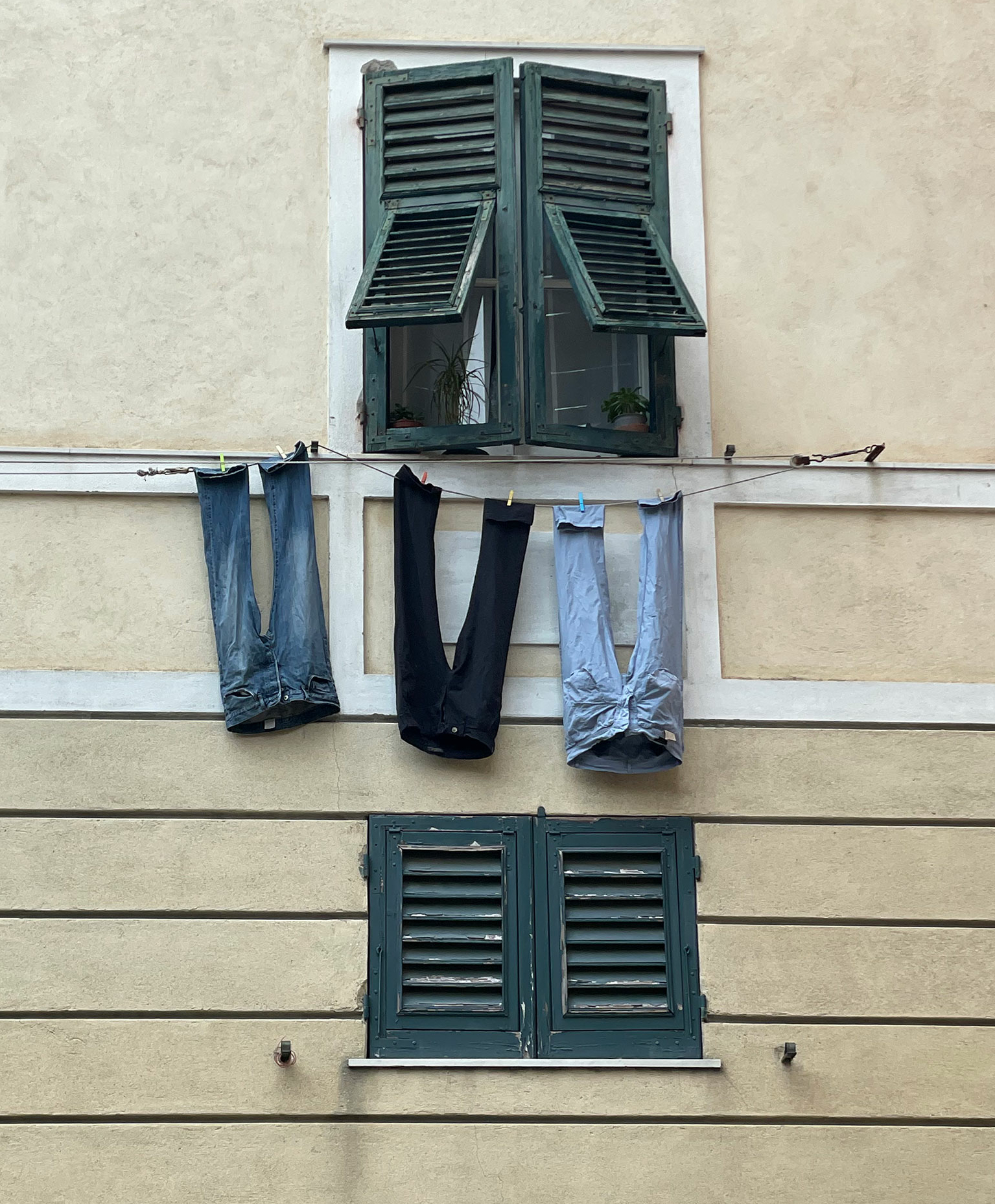Laura Carrara-Cagni returns to Genoa, its port and medieval old town, one of the largest historic centres in Europe.
photo by Laura Carrara-Cagni
After moving around with my (separated) family – London, Genoa, Naples, Florence – I relanded in Genoa as a teenager and stayed until my late twenties.
An incomer from Florence, Genoa welcomed me with open arms. It is a provincial but important port town with a history of accommodating newcomers. That warmth and robustness mixed with a distinct roughness about the edges is what I find intriguing.
Genoa is complex, rough, beautiful and ugly, a city of contrasts and amazing potential. I find a place interesting when you see potential, get irritated by things that can be better, and admire those that are already beautiful. As an architect, you feel your work is done when every space is at its best but in Genoa there will always be something to work on!
The medieval old town, one of the largest historic centres in Europe, is where you get lost in little lanes sometimes so narrow you can stretch your arms and touch both sides. Explore it on foot and be surprised by its constantly changing nature, from residences to workshops, from family businesses to fancy shops, from generations of Genoese to a variety of ethnic communities. Hidden within the old town are amazing domesticscale squares surrounded by beautiful palazzi, with glimpses of exquisite frescoes visible through the imposing windows.
Much still needs to be restored and upgraded. Whole areas, especially at the lower levels, are difficult to use due to the lack of daylight, but more and more people are moving into the bustling centro storico where slate articulated roofscapes offer jaw-dropping sea views.
When you exit the historic centre you find yourself in a regimented 19th century new town with wider streets that are lined with ornate buildings, and then you discover the 1930s additions. This is where everyone gets confused on styles. On the one hand, the 1930s produced the grand neoclassical fascist buildings lining the sides of the covered section of the Bisagno river, la Foce (my great grandfather, an architect, came up with the idea of covering the river). Constructed in harsh stone these neoclassical buildings have grand Imperial proportions to assert the power and toughness of the regime. They would be very hard to bring back to a comfortable human scale. But there are also beautiful 1930s rationalist buildings, linked to the international style, with human proportions and naval references, including round volumes and large terraces. My favourite is the former Mercato del Pesce, the covered fish market. It was my thesis building. Although badly reshaped by the construction of the elevated road, it is still charming and I am proud that I managed to get it listed back in the 90s.
Of course everyone knows that Cristoforo Colombo was Genoese, although the Spanish are still disputing this!
Disastrously, the elevated road construction cut off the old city from the seafront – the working port, at the time, was a fenced off separate authority. But the elevated road provides spectacular views for those entering the city from the motorway.
The most beautiful places in this town, tight between the port and the mountains, are hidden and take years to discover; churches, laboratories, theatres, shops. It was years after I moved to Genoa that I discovered blue jeans were invented here, and that the oldest pharmacy in Italy, still run by Carmelites, can be found in the hill quarter. Of course everyone knows that Cristoforo Colombo was Genoese, although the Spanish are still disputing this! The town centre features the colonnade garden of his home, and elsewhere iconic gardens, shaped as the three caravels, remind us of his extraordinary enterprise.
I’ve noticed that Genoese people are very reticent to move away – even when work prospects are not brilliant, as they are not ready to renounce the quality of life here. Few cities allow a swim, or a focaccia on a rock with a sea view, even if your lunchbreak is only an hour. Sea swimming in town is the norm, and the swim season starts in late April and ends in early October, while vitamin D harvesting is really all year round.
A little jewel is Boccadasse, a former fisherman’s village in town. With its colourful buildings on the beach, it is a very popular place for an evening stroll for people of all ages. At the end of the promenade is Corso Italia, providing some very sought after real estate. Most local people though are mountaineers rather than sailors. Rambling from one fort to the next on the hills crowning the town is a popular pastime.
I wasn’t truly a newcomer as my family is Ligurian, and while I moved away again, the rest of my family stayed at our extended family home in Quarto dei Mille from where Garibaldi left by sea with 1000 soldiers to unify Italy in 1860. I left in my twenties because I had broader horizons, but as time passes I enjoy returning over and over again to discover its secrets.



 Words
Words











